
|

Drew and Adam have spent years in the outback low level flying and pay homage to the legendary Supercub!
PART 1. Drew worked on Durham Downs Station S.W QLD for years and shares some memorable moments as he kicks up dust in the Outback!
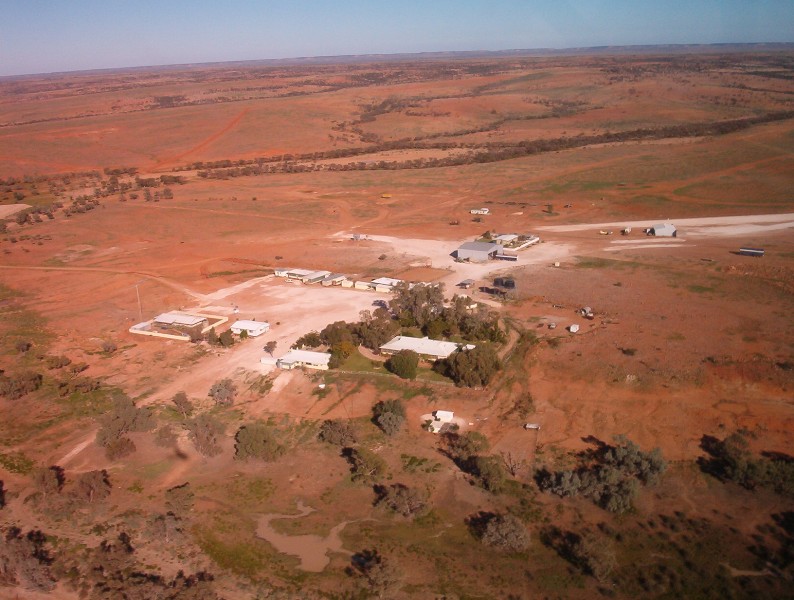
Durham Downs Station S.W QLD one of the smaller properties sitting on 3 million acres!
Ever since I started flying I have always wanted to work in the Australian Outback and participate in some good ol bush flying. In 2002 after many a phone call and resume sending I finally got my chance. Shane Brook the chief pilot at S Kidman @ Co offered me the position and said "You will be flying a Supercub okay?" ....Okay? It was more than ok, I was frothing at the bit to get my hands on that Supercub! I moved to Durham Downs Station in South West Queensland which was a smaller station sitting on about 3 million acres, which incorporated beautiful backdrops, the longest creek in the world "The Cooper Creek" and about 25000 head of cattle. My main job was to spot and then muster the cattle from the air while keeping tabs on where the motorbikes and horses were on the ground, so that they could pick the cattle up that I had brought in with the aircraft. It is definately some of the most sensation and rewarding flying experience I have had yet and I take my hat off to that brilliant piece of work "The Supercub!"
|
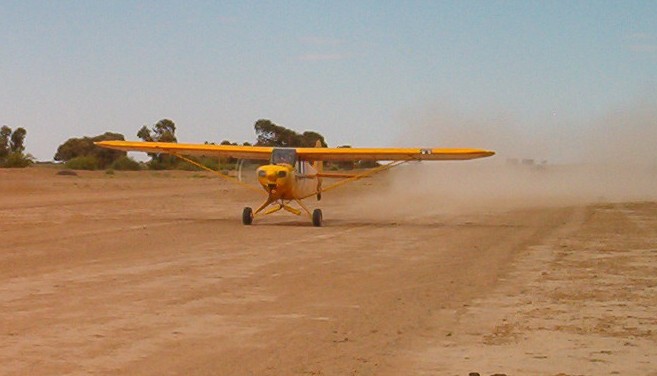
VH-KIC Taking off at Toorachie with lots of room...about 200 meters, sometimes it was much less.
The Supercub is one of those aircraft that just wants to be flown. The handling is very good and visibility is excellent and makes it perfect for this type of work. The low speed mixed with short takeoff and landing capabilities come in very handy as some of the landing area's on Durham are nothing more than a small dirt track, clearing or tiny claypan. I remember one particular day I was parked on a small claypan in the cooper Creek and the wind was blowing from the west at about 25kts. The Cub will fly at 37kts easy with full flap selected, so as I powered up the tail came off the ground without the mainwheels moving. As I released the brakes the cub lunged forward and was off the ground in less than 12 meters! You could imagine some of the landings achieved under the same conditions and I was able to land in some extremely tight spots. However having landed I had to watch the wind carefully to make sure it didn't drop too much or I would never achieve the same performance to get off in the same space.
|
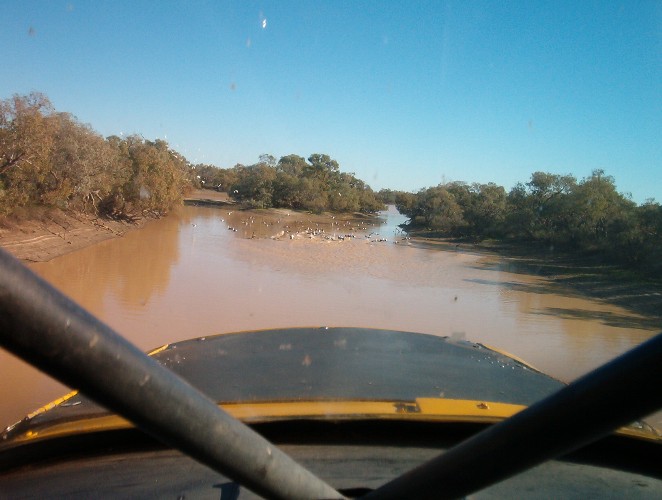
Getting on down and checking for cattle hiding in the lignum bushes.
Low level flying is both challenging and rewarding and being able to do it every day will be hard to beat. It is an important part of mustering and enables you to get right down on the deck to check for cattle that you might otherwise miss flying up at 500ft. The feeling you get skimming just above the water and lanscape as well as manouvering in and out of trees was breathtaking, even though many days I would come home exhausted and be ready for bed by 8.00pm. Flying at low level all day really zaps it out of you as you need to be on the ball and concentrate 100% when manouvering close to the ground. Lots of hazards are awaiting you at that level such as birds, cattle, trees, the wind, turbulence and not to mention "THE GROUND"! I was landing back at the station one afternoon and was commited to my landing when all of a sudden a Whistling Kyte decided to make a grand entrance into my right wing. The bird smashed right into the stall horn and so that horrible high pitched scream was heard until I shut down. The damage looked like someone had punched the leading edge really hard with their fist but thankfully was easily fixed. I was lucky that I was landing and quite slow, I hate to think what might have been if I encountered that same bird through my windscreen at 70kts and at 20 feet!!Low level is some of the best flying experience and aircraft handling I have had yet and found it can really improve your situation awareness.
|
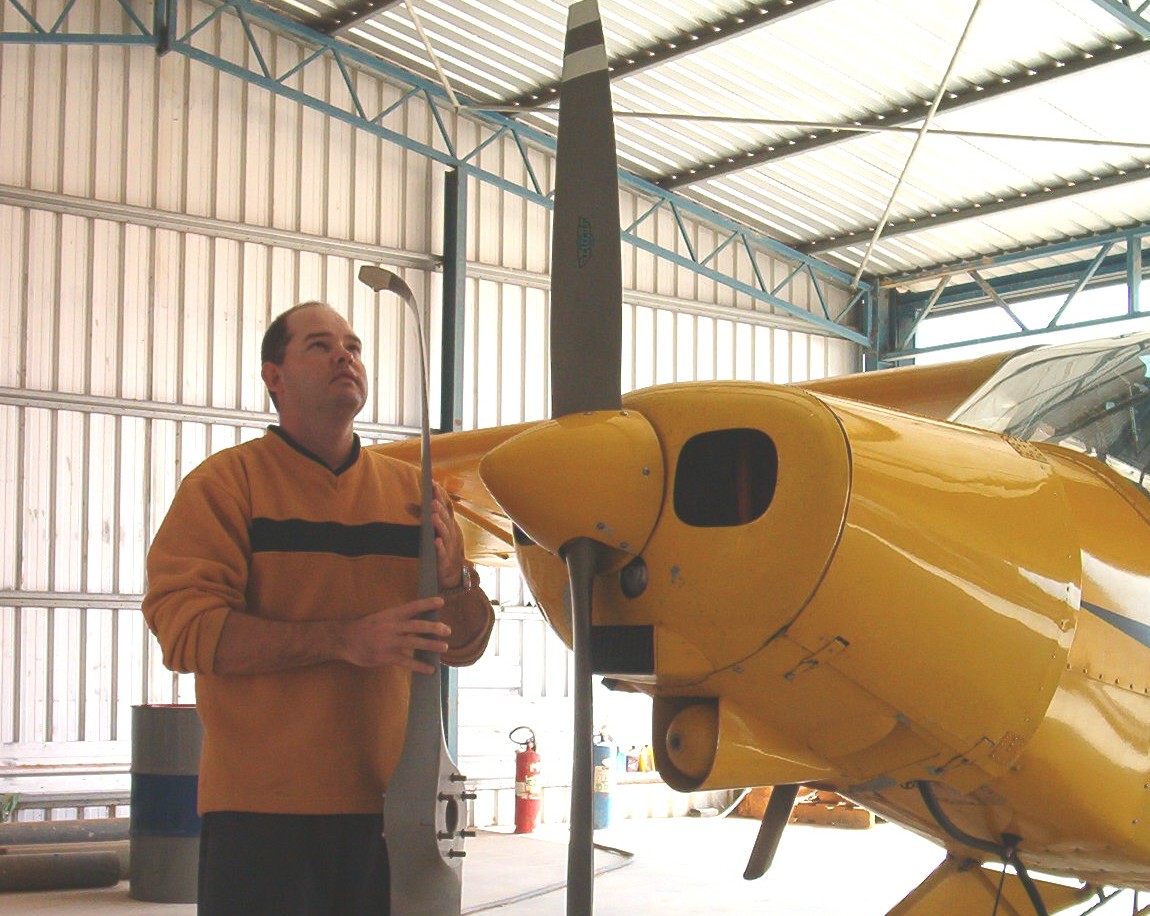
Accidents can occur. A lucky escape for me after wrestling a fuel drum in VH-KIC.
Remember what I was saying about concentration and situation awareness? One morning I started work as usual and was preparing the Cub for the days mustering. I was to be mustering alongside another pilot who was flying an R44 chopper. The chopper pilot finished his refuelling and departed in the R44 for the mustering area, while I was warming my engine. Little did I know the Chopper pilot had laid down the drum of fuel but not rolled it away, and it was sitting out in front of my aircraft. The Supercub being a tail dragger means its not that easy to see right in front of you, hence the need to swing the tail from side to side when taxiing to look where your going. The drum was too close and even though the other pilot left it there I made the mistake of not checking it was removed. As I taxied out I felt and heard a large "BANG"!! I new straight away something was wrong and immediately pulled the mixture. I thought I had hit the bosses dog! As the prop was winding down there were a series of bangs like a prop slapping the top of something. I got out and realised what had happened and was extremely lucky to escape a ball of fire! I had taxied into the drum and the edge of the prop sheared off as it hit the base of the drum (laying down), the drum when past the prop and under the cub, then bounced of the main wheels and went back into the prop! That was when the series of bangs was heard as the prop bent on the other side and was slapping the top of the drum as it winded down. Because the Cub is a taildragger the prop sits higher off the ground so it never pierced the drum "Phew!" Because I had shut down the engine fast I avoided any damage to the engine so the boss put his whip away! I learnt a major lesson that day and it goes to show that complacency at any stage of flight can ruin your day very fast.
|
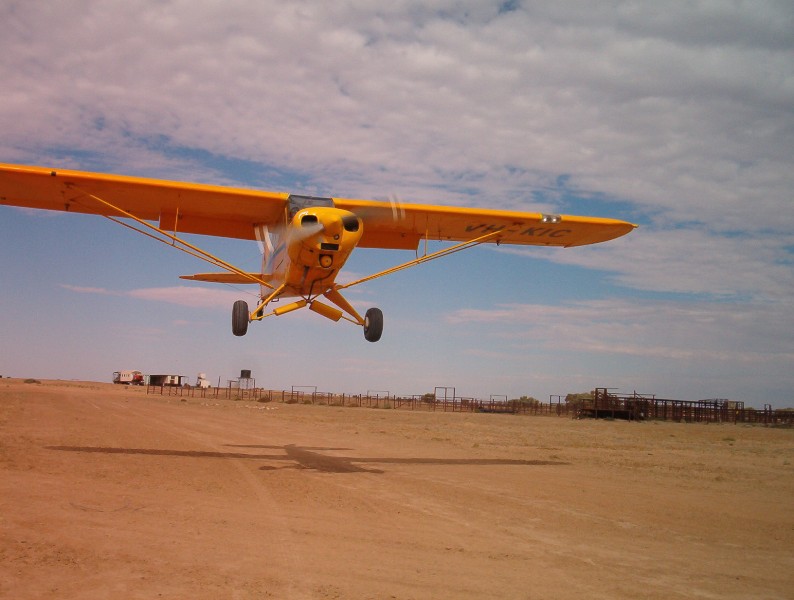
Airborne for another day of mustering.
Grandpa Joseph's Baptismal Picture
|

Landing in tight spots was always a highlite.
|
Free
|
|
